La Grande Muraille de Mutianyu - Billets, heures d'ouverture, points forts et conseils
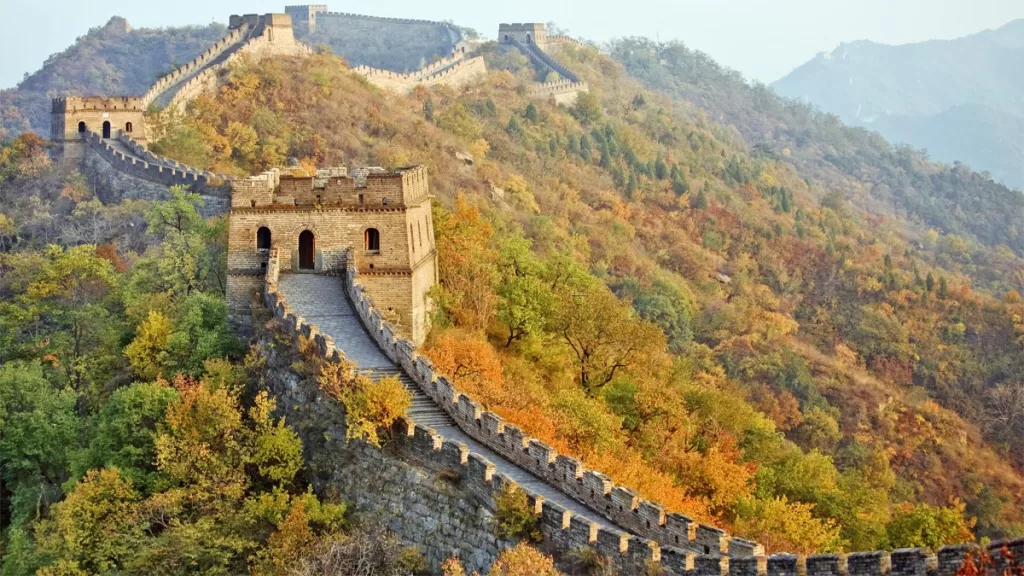
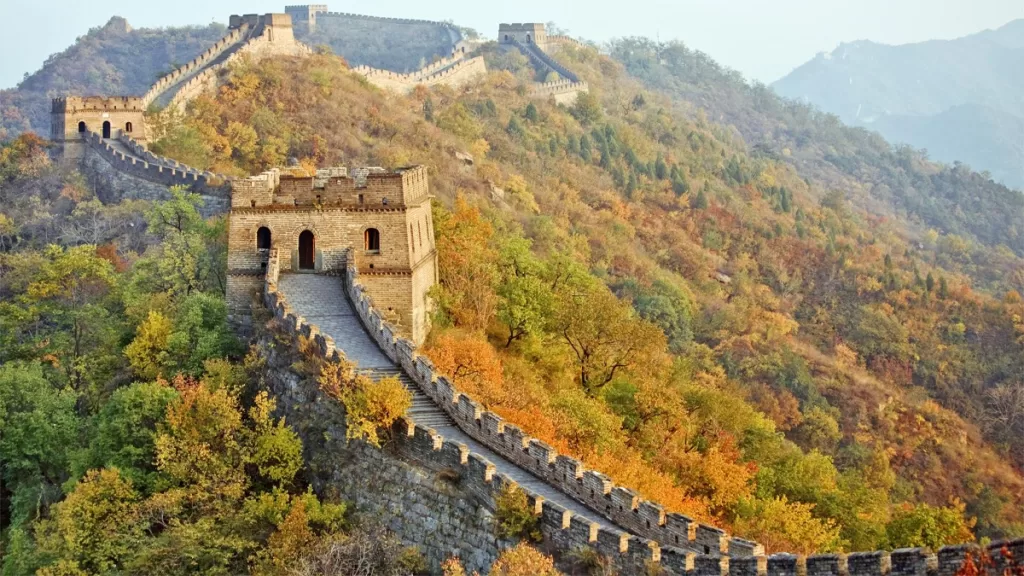
Mutianyu Great Wall (慕田峪长城), located in Huairou District, northeast of Beijing, connects to Juyongguan in Changping District and Gubeikou in Miyun District. It was initially constructed during the Northern Qi Dynasty (550-577 AD) and was later rebuilt by General Xu Da in the early Ming Dynasty on the foundations of the Northern Qi Great Wall. Due to its strategic location, Mutianyu has historically been a critical military stronghold for defending Beijing, witnessing numerous battles, particularly during the Ming Dynasty.
In the second year of the Yongle Emperor’s reign (1404 AD), a major pass was established here, with the Great Wall being constructed on the high mountains. The pass was originally named Motianyu Pass, meaning “Sky-reaching Valley,” because looking up from the valley, the wall seemed to touch the sky. The name later evolved to Mutianyu Pass due to the phonetic similarity between “Motian” and “Mutian” and the interchangeable use of the characters “峪” (valley) and “谷” (valley). By the late Ming Dynasty, families with surnames such as He, Wang, and Yang began to settle in the area, forming a village named after the pass.
The Great Wall at Mutianyu is built with Hua Mountain rock and lime, featuring dense watchtowers and dual battlements. The wall is fortified with Ming Dynasty cannons, and the double parapets have square openings under the battlements, designed in a curved top shape. These openings were strategically built to facilitate the defenders in attacking enemies while providing protection for themselves. Today, Mutianyu is renowned for its well-preserved architecture and stunning mountainous scenery, making it a popular destination for visitors seeking to experience the grandeur of the Great Wall.
Table des matières
- Basic Informaiton
- Localisation et transport
- Map of Mutianyu Great Wall
- Highlights of Mutianyu Great Wall
- Vlog about Mutianyu Great Wall
- Conseils utiles résumés à partir d'études
- Facts about the Great Wall
- Autres sections des Grandes Murailles de Pékin
Basic Informaiton
| Site web | https://www.mutianyugreatwall.com/ |
| Durée estimée de la visite | Plus de 3 heures |
| Heures d'ouverture | 9.00 – 16.30; Last entry: 15.30 (14th Novermber – 15th March the next year) 7.30 -18.00; Last entry: 17.00 (From Monday to Friday, 16th March – 13th November) 7.30 – 18.30; Last entry: 17.30 (Saturday and Sunday, 16th March – 13th November) |
| Admission Ticket | Adut: 45 yuan Children under 6 years old or below 1.2 meters: free |
| Navette | One-Way: 10 yuan Round: 15 yuan |
| Téléphérique | One-Way: 100 yuan Round: 140 yuan |
| Toboggan Rides | One-Way: 100 yuan Cable Car & Toboggan Rides: 140 yuan |
| Numéro de téléphone | 0086-010-61626022 |
Localisation et transport
Mutianyu is a section of the Great Wall of China, located in Huairou District, about 70 kilometers (43 miles) northeast of central Beijing. The location is easily accessible by public transportation or private car, and is open to visitors year-round.
Bus (about 2. 5 hours):
- Take bus No. 867 at Dongzhimen Stop, and it will take you directly to the tourist attraction. It departs every half an hour.
- Take bus No. 916 Express at Dongzhimen Stop, transfer to H23, H24, H35, or H36 at Huairou Beidajie Stop (North Avenue Huairou), and get off at Mutianyu Huandao Stop (Mutianyu Roundabout) to reach the entrance.
- Alternatively, you can use the Mubus Service at Qianmen Street, which takes you directly to the Mutianyu, including the entrance ticket, tea and sncaks, and an English speaking tour guide on bus.
- Taxi (about 1.5 hours):
- The price varies according to the different starting points. But it costs about 300 yuan from the Forbidden City to Mutianyu Great Wall, if you want a general idea.
Map of Mutianyu Great Wall

Highlights of Mutianyu Great Wall
Battlements and Branch Cities

One of the unique architectural features of Mutianyu Great Wall is its battlements, which are not the typical rectangular openings but instead resemble jagged saw teeth. The arrow holes, positioned below the battlements, are square with curved tops, a design that facilitates better defense and protection for the soldiers. Strategically critical sections of the wall are fortified with watchtowers and, in some places, with cannon platforms.
Mutianyu is also notable for its “branch cities” or secondary walls. These are additional segments of the Great Wall that extend off the main wall along high ridges, adding another layer of defense. These branch walls vary in length from a few meters to several dozen meters and often include their own watchtowers.
Dense Watchtowers

The density of watchtowers at Mutianyu is remarkable. From the first watchtower (Dajiao Lou) to the fourth (Zhengguan Tai), there are four watchtowers within a span of less than 500 meters. Extending from the first to the twentieth watchtower over a length of just 3,000 meters, there are 25 defensive structures, including watchtowers, signal towers, and ramparts. This high concentration of defensive structures is uncommon among other sections of the Great Wall.
A distinctive feature of the Mutianyu section is the presence of double-sided battlements. While most sections of the Great Wall have battlements only on the outer side, Mutianyu has them on both sides. These double-sided battlements serve as protective barriers for soldiers fighting enemies on either side, underscoring the strategic significance of Mutianyu in history.
Three Dimensional and Dynamic Landscape

The Mutianyu Great Wall is renowned for its three-dimensional and dynamic landscape. The Mutianyu Pass, at an elevation of 486 meters, is the lowest point. Moving eastward, the elevation rises sharply by 117 meters over a distance of less than 500 meters to reach the Dajiao Lou (Watchtower 1). To the west, from the Zhengguan Tai (Watchtower 4) to Watchtower 19, the terrain is relatively smooth and less steep. However, from Watchtower 20 to the highest point at Niujiaobian, the elevation increases dramatically by 533 meters over the course of approximately ten watchtowers, reaching an impressive 1,039 meters. This significant elevation change makes the wall visually spectacular.
Cable Car and Speed Slide

Mutianyu Great Wall is equipped with comprehensive tourist facilities. The scenic area includes a cable car, which spans 723 meters and reaches an elevation of 640 meters at its highest point. The cable car has a capacity of transporting 1,800 people per hour in one direction, making access to the wall convenient and efficient.
Another notable feature is the Speed Slide, also known as the “dry land toboggan.” This slide combines both sports and entertainment, stretching 1,580 meters in length with a top speed of 30 kilometers per hour. This thrilling ride provides a fun and exhilarating way to descend from the Great Wall.
China Dream Stone City

At the foot of the wall is the China Dream Stone City, covering an area of 33,000 square meters. This site houses over 20,000 unique stones collected from across China. These stones are displayed in three natural scenic areas: the Mutianyu Waterfall Cave, the Peculiar Stone Garden, and the Stone Spectacle Hall. This attraction offers visitors an additional cultural experience and a chance to appreciate the natural beauty of rare stones.
Vlog about Mutianyu Great Wall
Conseils utiles résumés à partir d'études
Enjoy the Toboggan Slide: The toboggan slide at Mutianyu Great Wall is quite long and very popular among children. If the queue isn’t too long, it’s recommended to include this activity in your itinerary.
Take the Cable Car to Towers 14-20: The cable car ride and the corresponding towers (14-20) are considered the highlights of Mutianyu Great Wall. They offer stunning views and are worth experiencing.
Des transports pratiques: To reach Mutianyu Great Wall, you can take a direct shuttle bus from the Arrow Tower at Qianmen (前门). This shuttle service is provided by the Beijing Tourism Distribution Center and costs around 80 RMB for a round trip, including transportation within the scenic area. It’s a time-saving and convenient option.
Accommodation Options: There are several guesthouses located halfway up the mountain on the way to Mutianyu. Additionally, there’s a hotel near the entrance of the scenic area. However, some visitors find the hotel’s facilities to be average.
Prioritize Safety: Be cautious and prioritize safety during your visit. The steps on the Great Wall can be steep, some even close to a 90-degree angle. Take your time and watch your step to prevent accidents.
Facts about the Great Wall

How long did it take to build the Great Wall of China

Who built the Great Wall of China

Why was the Great Wall of China built

Why is the Great Wall of China important?

Where does the Great Wall of China end?

How tall and wide is the Great Wall of China

What was the Great Wall of China made of
Autres sections des Grandes Murailles de Pékin
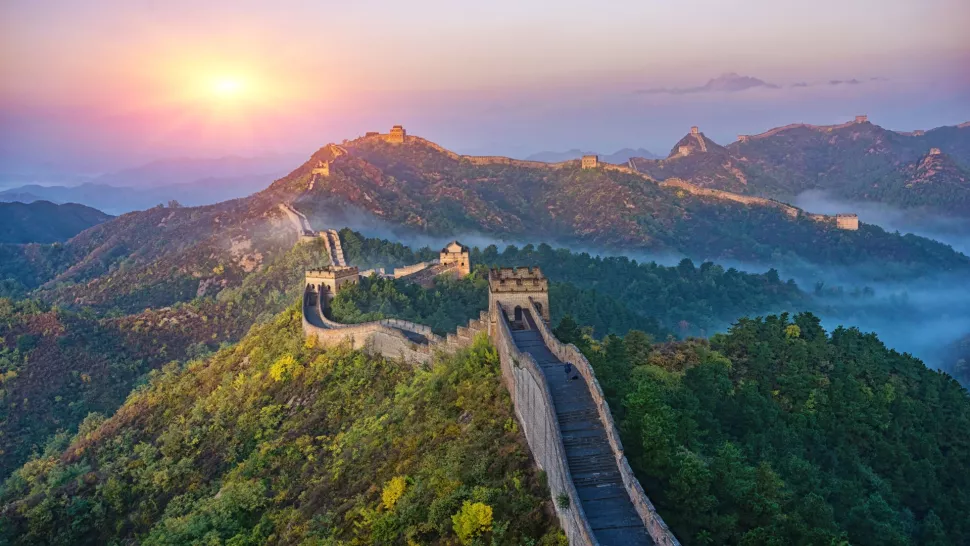
Grande Muraille de Badaling - le tronçon le plus célèbre

Grande muraille d'eau de Huanghuacheng - section parallèle à un lac

Grande Muraille de Simatai - une visite nocturne unique
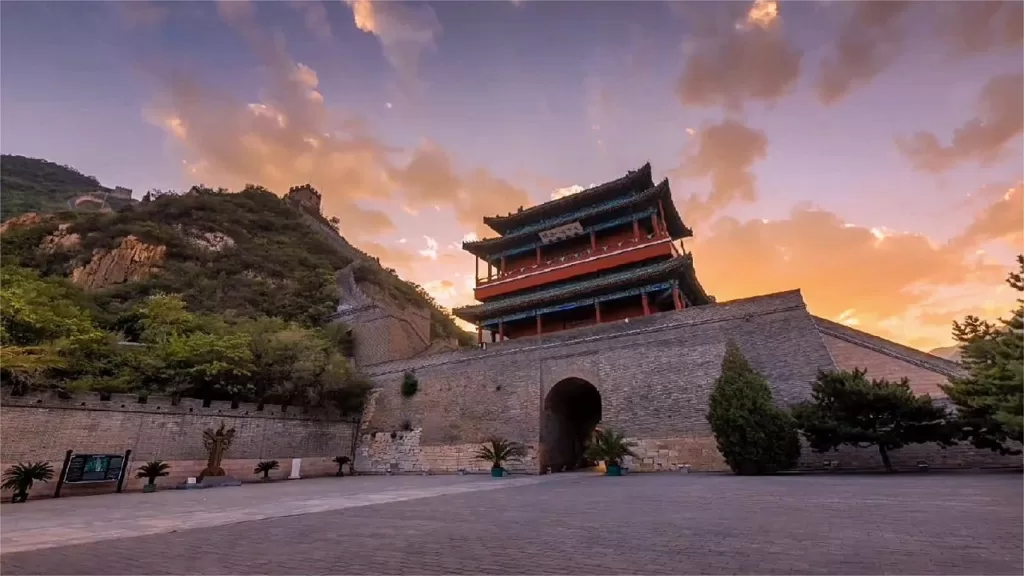
La grande muraille du col de Juyong - une importante place forte militaire
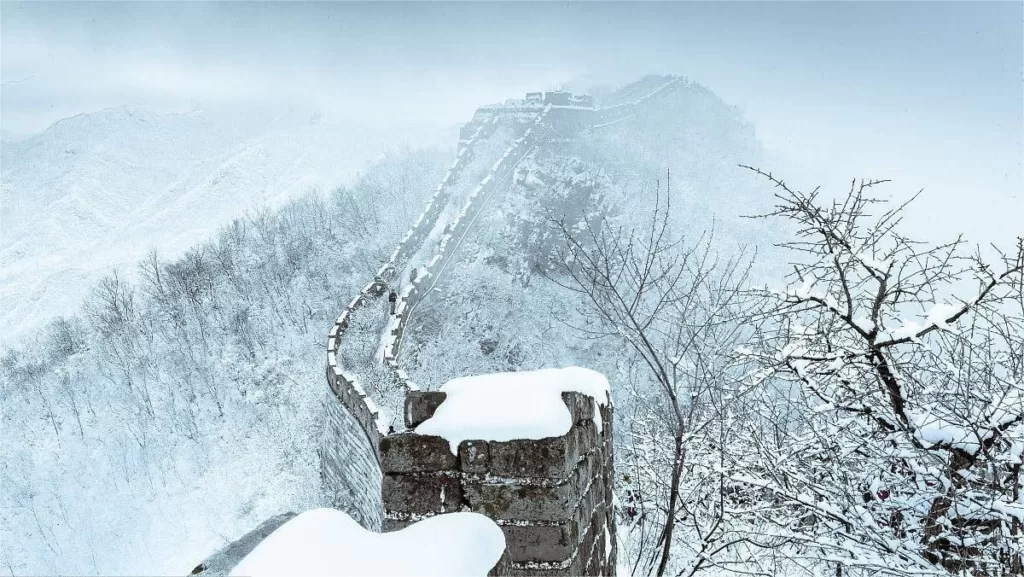
La grande muraille de Jiankou - une section intacte
Paysages de Pékin, Site du patrimoine mondial de l'UNESCO